blog
Book Review: Sleeping Beauty by Lydia Panas

Amrin © Lydia Panas
The first line of the press release for Sleeping Beauty by Lydia Panas states: “Portraits of women and girls intertwined with the photographer’s gaze, in a rare subversion of photography’s power relations.” Panas is no stranger to subverting the power relationship (of photography’s male dominated history, we presume) as her work in The Mark of Abel, or Falling from Grace has shown. The power of presenting photographic work in psychological and social contexts often leads the viewer or reader to the conclusion: this work is important. Surely it must be, the critics and the book publisher and the artist have told me so. Thus my skepticism was set in motion. I believe Panas’ work in Mark of Abel, or Falling from Grace (which I’ve seen prior to the images in Sleeping Beauty) are great portraits told in a compelling way, and carry a psychological context the viewer can explore and relate to. Unsettling or uncomfortable glances from the subjects prompt me to consider their inner thoughts and feelings. Panas’ subjects are often in liminal spaces which act as a metaphor for personal reflection and contemplation. These strengths are some of the aspects of Panas’ work which I appreciate, and even enjoy, as I experience a palpable sense of uneasiness.
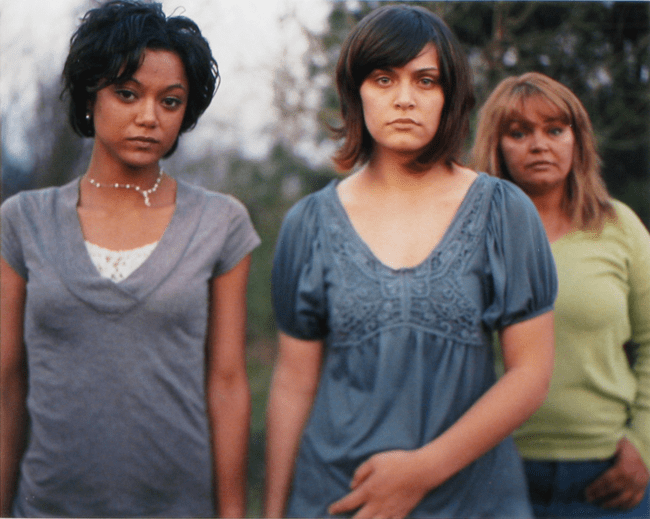
© Lydia Panas – from The Mark of Abel
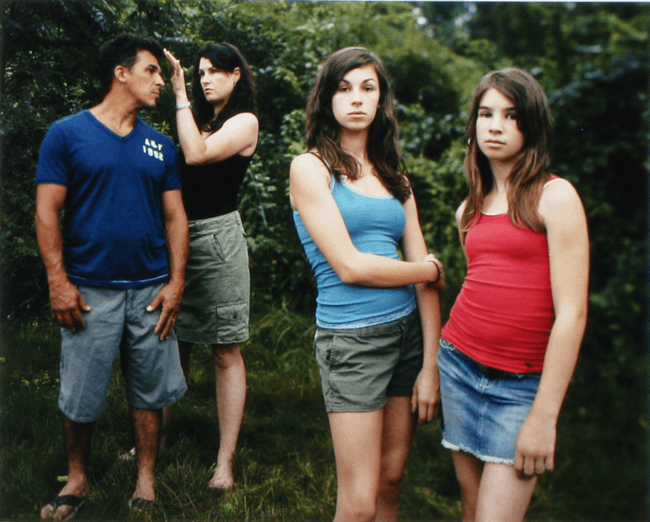
© Lydia Panas – from The Mark of Abel
In Sleeping Beauty, we see rich, color images/portraits of women and girls lying down or half-reclined in lush natural settings. This is not uncommon for Panas to use this type of setting for her portraits. The position of the subjects serves as “a metaphor for the positions girls and women have been placed in historically. Yet,” as the book’s press release continues, “the women and girls Panas photographed look at the camera and thus the viewer directly, with keen self-awareness. Through the photographer’s lens, their inescapable gazes signal the knowledge that they are working to counter the stereotypical boxes they have been forced into. These women and girls look at us in a way that implies a lack of complicity. In a role reversal from the fairytale, Panas’ subjects exude a quiet power. They are wide awake and ready to rise at their own bidding.”
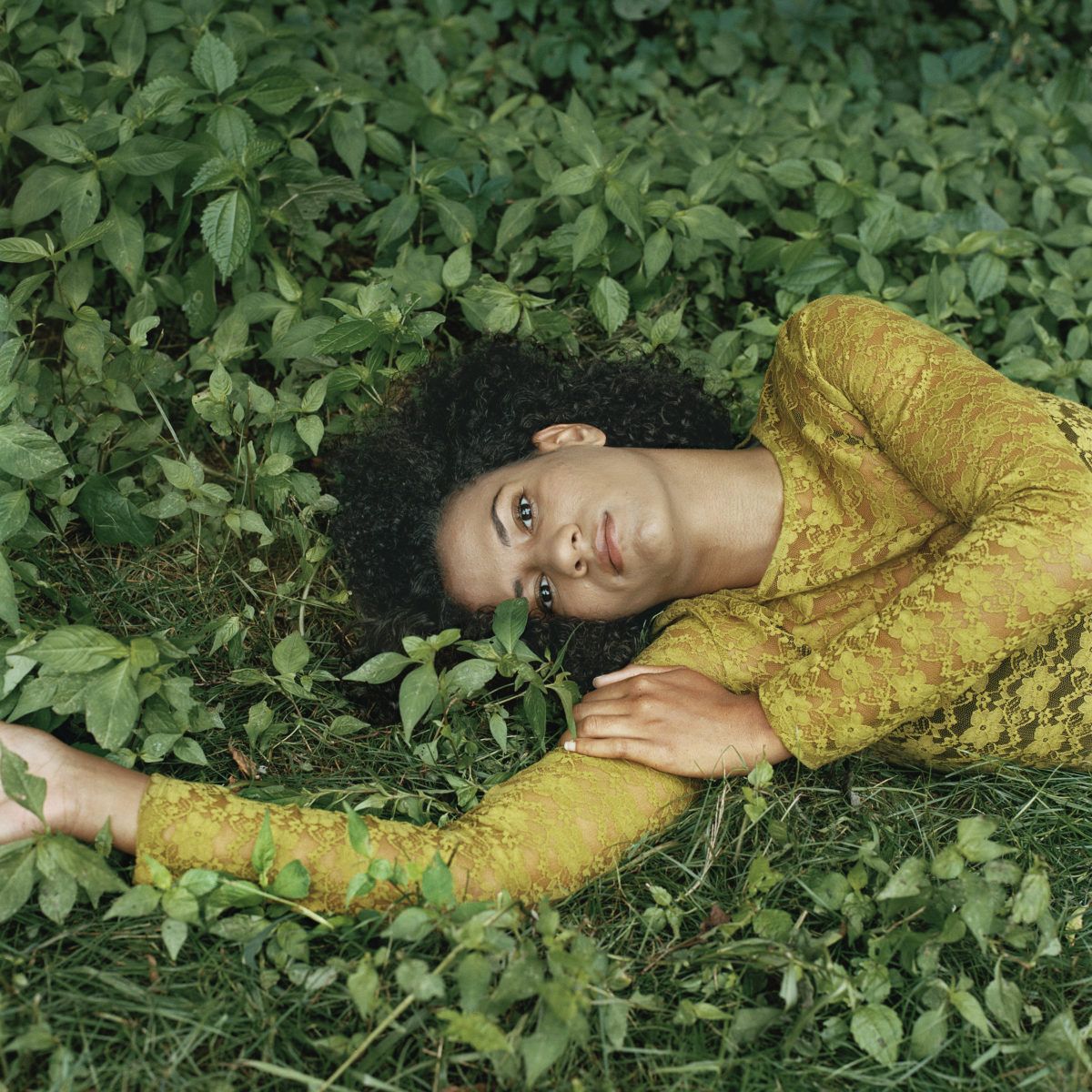
Ava © Lydia Panas
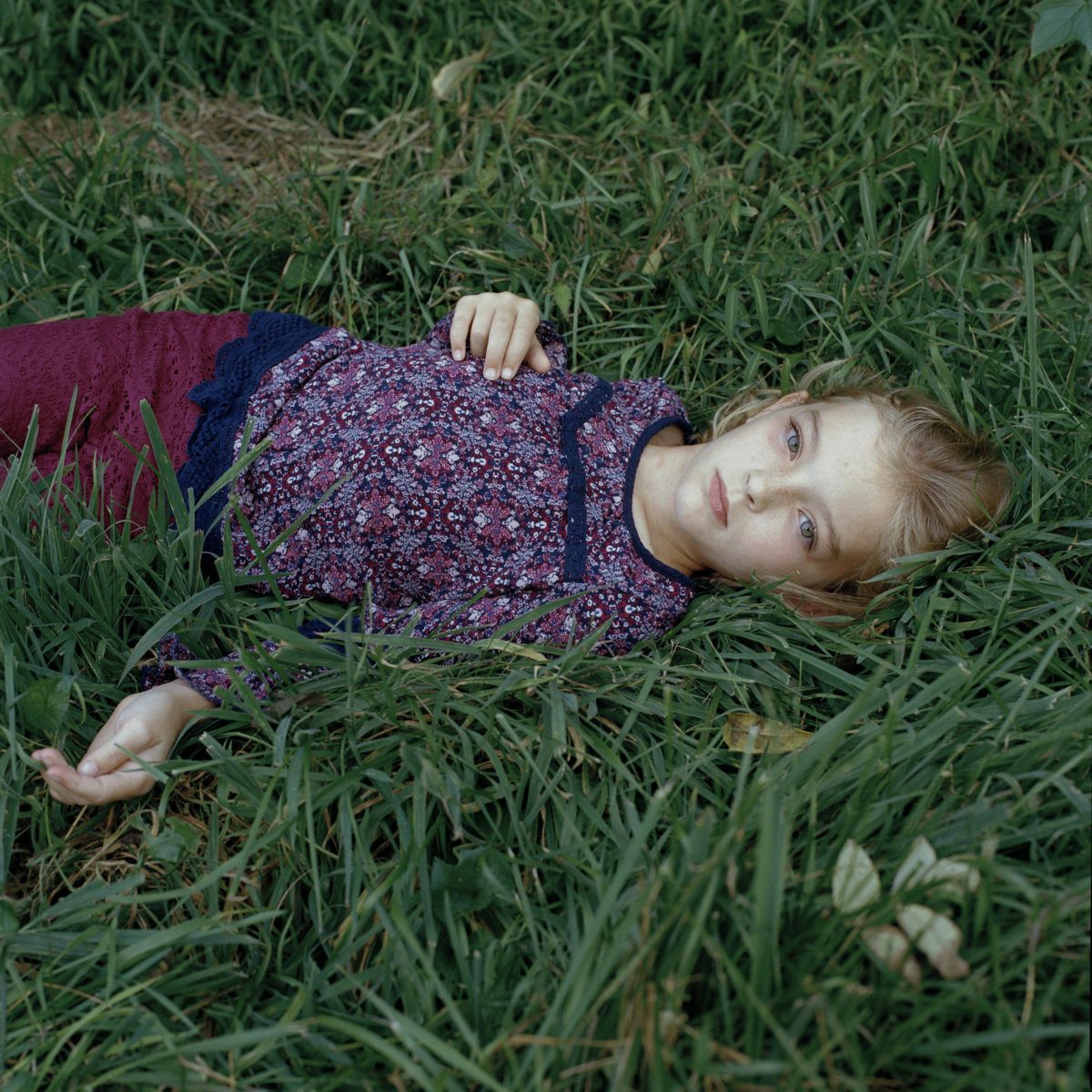
Jayda © Lydia Panas
But I just don’t see it at first. I read dispassionate stares and passive poses overall, and glances which seem to test the trust between photographer and her youngest subjects. Something is disconnected in her choice of metaphor – Panas book is named for a character that doesn’t really advocate for herself, yet the portraits in the book are supposed to be proactive women who are full of potential and ready to stand up for themselves. In preparation for this review, I went back to some college texts, and my wife lent some of her books, to resurrect critical writing by Betty Friedan, Bruno Bettelheim, and Gloria Steinem to frame the ideas (as I was told by reputable artists, curators and writers) I would encounter in Panas’ book.

Carmen © Lydia Panas
I understand I cannot escape the male view which I bring to Sleeping Beauty. Perhaps this is my blindspot with this work. Despite my efforts to better understand the context of Panas’ book, my experience was problematically disconnected and incongruent. I tried to incorporate the possible underlying feminist or academic implications when first viewing the work and reading the pictures. The essay insightfully written by Marina Chao touches on the aspects of what she sees in the work, and how others might as well. “The positions of the subjects’ bodies, prone in the grass, is vulnerable, one that unnervingly both evokes tranquility and calls to mind violent crimes against women. But in this space and in this moment, they are in no danger. The women appear stolid, unbothered, apprehensive, indignant, assured, exhausted, defiant, resolved, whole. Panas creates a collective portrait of psychological womanhood as it is embodied by herself and the sitters and is understood, or misunderstood, by those who view the work.” Upon re-reading Chao’s essay, I discovered that the psychological metaphor of mirrors and windows either reflecting or revealing knowledge of both ‘self’ and/or ‘others’ is very appropriate here.
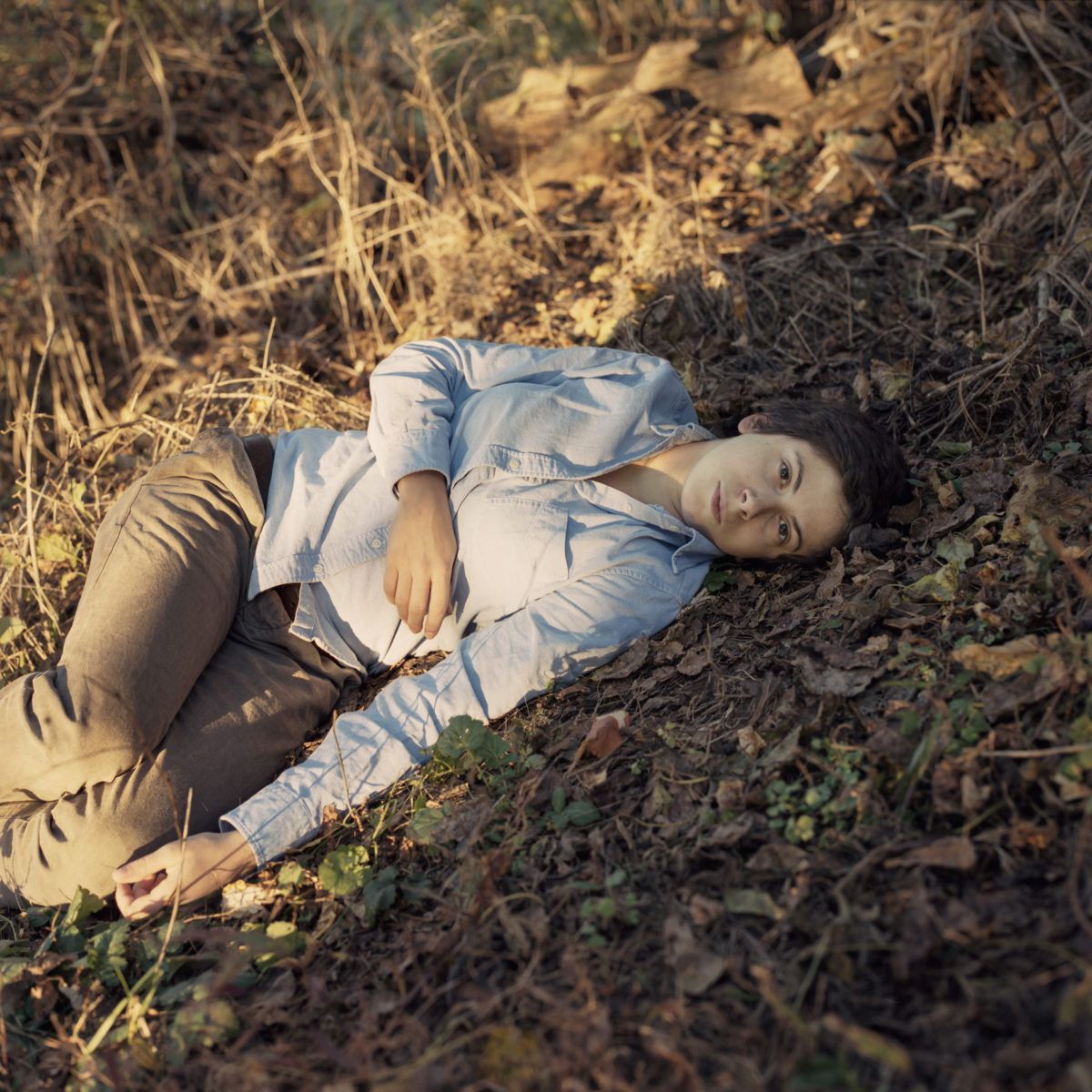
Tatiana © Lydia Panas
Panas chose the Sleeping Beauty title as the tentpole for this book, and declares that these women are working to counter the stereotypical roles and positions they’ve been burdened with. The females whose portraits appear in Panas’ Sleeping Beauty stare or look directly into the lens, but I was left feeling like they were passive in their poses. I did not often read the subject’s expressions as “intensely affecting gazes”, but I did view them as being “protected and intimate”. Panas has gained their trust and does interact with them in intimate exchanges that a talented portrait photographer can capture. The women and girls shown in this book are active participants, and Panas’ camera angles do place them in the position of someone who has power and/or agency, but their cool consideration of the viewer and expressions that sometimes read as ‘aloof’ to me just did not hit the mark of ‘intense’. By comparison, the subjects appearing in Panas’ Mark of Abel feel like they fit the context of her project – a complicated range of emotions depicted thought frank, direct portraits which explore familial relationships and the way people interact with other people while being photographed. The ability of Panas to explore and present complicated psychological interactions is one of her greatest strengths.
Chao also keenly highlights that “the arresting portraits of women reclining in nature and staring out directly at the viewer that comprise this series have much to say about the history of looking at women, both in life and in art. But Panas’ work is equally a deeply personal exploration of her own identity.” (my emphasis, not Chao)
If I begin with the premise that Panas is working through an exploration of her own personal identity, then I can more easily empathize with the work, instead of puzzle and struggle over the premise of the women fitting into fairy-tale feminism. In hindsight, I should’ve first considered this project in terms of potential for what happens next. Perhaps the ‘awakening’ which Panas alludes to will enable the women shown in the images and the viewer (no matter the gender), to escape the historic paradigm, and embrace the blank slate of limitless possibilities in their next chapter of subverted power relations.
Sleeping Beauty succeeds in the way that I always hope – Panas’ work has challenged me to think. The work is masterfully created, so I am left to give my full attention to the grand questions of what she has done here. How did she choose to express herself and how is it the same or different from what I’ve already experienced? I’ve thought about this book for weeks – and I’m a better person for it.
::
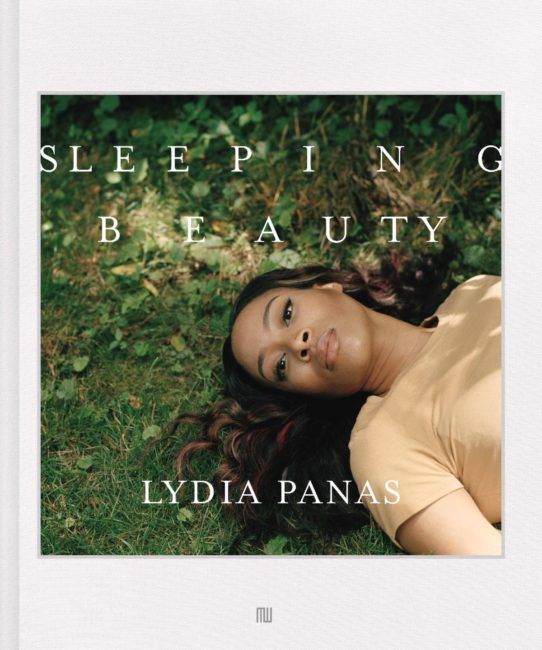
Sleeping Beauty by Lydia Panas
Hardcover
10 x 12 inches
112 pages, 65 color illustrations
Published by MW Editions https://www.mweditions.com
::
Lydia Panas is a visual artist working in photography and video. Drawing on a combination of psychoanalysis and feminism, her work looks at identity and what lies below the surface, investigating questions of who we are and what we want to become. Exploring the roles of power and trust on both sides of the camera, she describes what it feels like to be a woman, a human, and the complex range of emotions we feel. Panas’ work has been exhibited widely in the U.S. and internationally. Her photographs are represented in public and private collections including the Brooklyn Museum, Bronx Museum, Museum of Fine Arts Houston, Palm Springs Art Museum, Allentown Art Museum, Museum of Contemporary Photography Chicago, Museum of Photographic Arts San Diego, Zendai Museum of Modern Art, Shanghai, and the Sheldon Museum, among others. Two monographs of her earlier work have been published: Falling from Grace (Conveyor Arts, 2016) and The Mark of Abel (Kehrer Verlag, 2012), which was named a “best coffee table book” by the Daily Beast. For more information, visit: www.lydiapanas.com.
Location: Online Type: Book Review, Portraits
Events by Location
Post Categories
Tags
- Abstract
- Alternative process
- Architecture
- Artist Talk
- artistic residency
- Biennial
- Black and White
- Book Fair
- Car culture
- Charity
- Childhood
- Children
- Cities
- Collaboration
- Community
- Cyanotype
- Documentary
- Environment
- Event
- Exhibition
- Faith
- Family
- Fashion
- Festival
- Film Review
- Food
- Friendship
- FStop20th
- Gender
- Gun Culture
- Habitat
- Hom
- home
- journal
- Landscapes
- Lecture
- Love
- Masculinity
- Mental Health
- Migration
- Museums
- Music
- Nature
- Night
- nuclear
- p
- photographic residency
- Photomontage
- Plants
- Podcast
- Portraits
- Prairies
- Religion
- River
- Still Life
- Street Photography
- Tourism
- UFO
- Water
- Zine

Leave a Reply